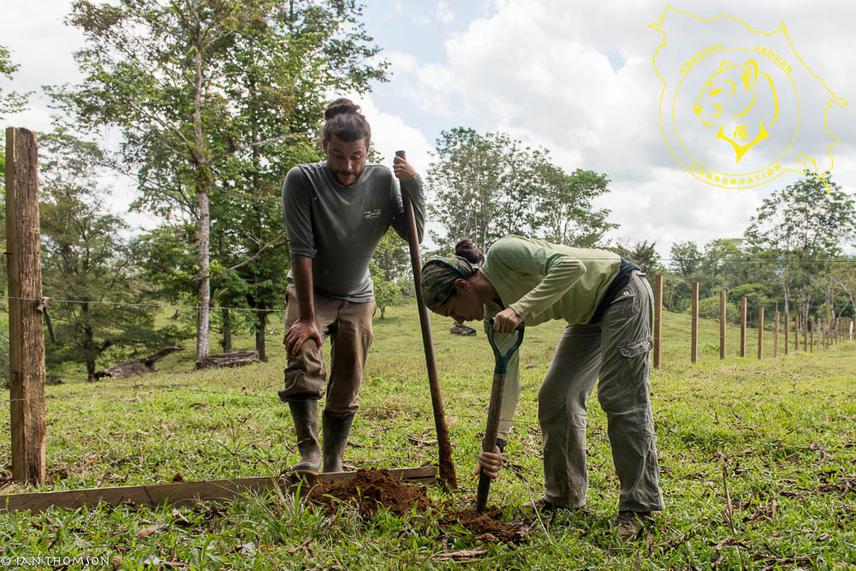Stephanny Arroyo-Arce
Other projects
9 May 2012
Habitat Selection by Jaguar (Panthera onca) in Tortuguero National Park, Costa Rica
Our mission is to monitor jaguar populations on the Northeastern Caribbean Coast of Costa Rica, with a specific interest in Tortuguero National Park (TNP) and adjacent protected areas. Our project aims to provide an insight into the interaction between flagship species, the jaguar and the endangered marine turtles that nest in TNP. Secondly, assess this relationship in terms of bioaccumulation of mercury (specifically methylmercury) in jaguars as response of their consumption on marine turtles. Finally, we will encourage the coexistence between the local communities and jaguars by implementing anti-predatory methods to reduce jaguar predation on domestic animals.

Stephanny Arroyo-Arce & Daniel Corrales from Panthera stablishing a partnership while building a fence to stop jaguar attacks in CR © Ian Thomson
Since its inception in 2012, our project has undertaken the mission to increase the knowledge regarding the jaguars in Tortuguero National Park (TNP) and surrounding areas, to facilitate decision-making regarding the management and conservation of this species and its habitat. To achieve our goal, our project has been divided into three stages. First, we identified the main threats and landscape variables related to the occupancy of the jaguar in TNP and its buffer zone. Second, we delved into the predator-prey interaction between this apex carnivore and the marine turtles that nest in TNP, which allowed us to gain a better understanding of this elusive feline. Third, we monitored the adjacent protected areas of TNP (Barra del Colorado Wildlife Refuge, Pacuare Nature Reserve) to assess the status of the local jaguar population and its prey species, and the migration of jaguars and other wild cats between those protected areas. Having successfully completed these stages, we now see the need to take our efforts back to the buffer zone of TNP, an area considered a hotspot for livestock depredation by large felids in Costa Rica. This stage will allow us to protect the local jaguar population by implementing methods to reduce human-jaguar conflict.